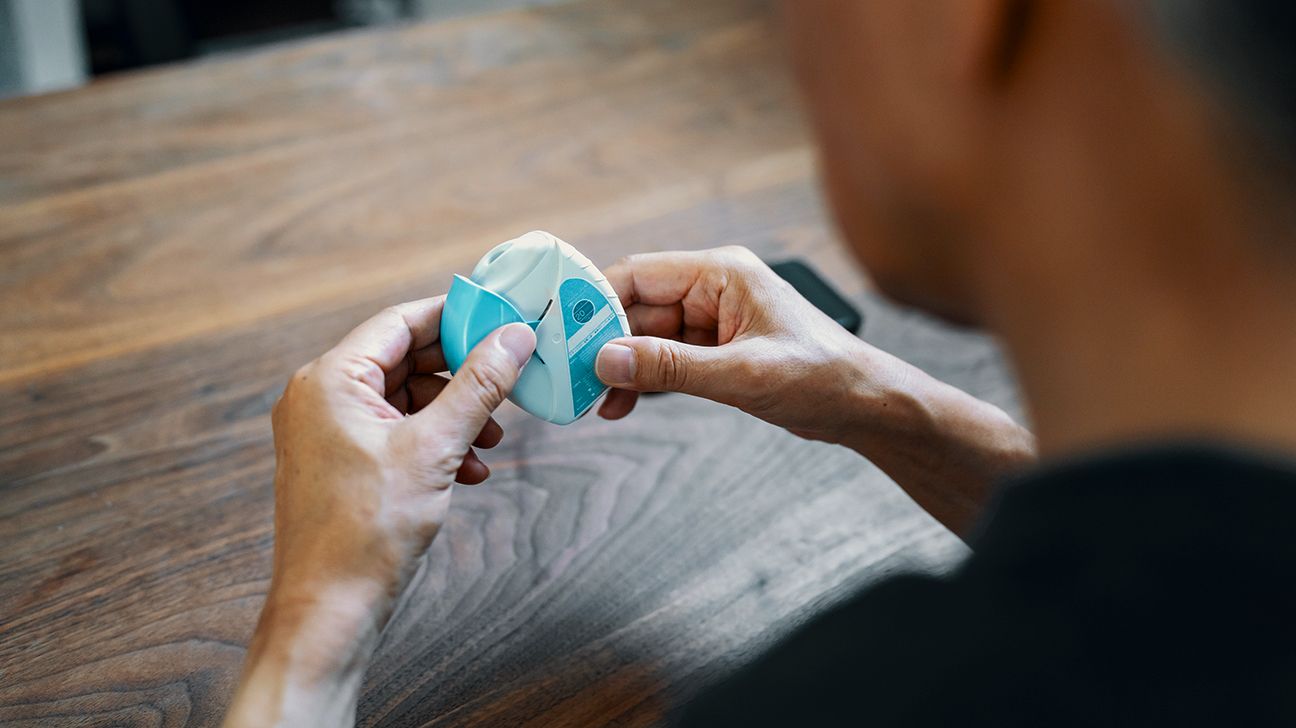If you have COPD, your doctor might recommend triple therapy, which is a combination of three medications. This can be a good option if you have frequent flare-ups of your COPD symptoms.

There’s currently no cure for COPD, but treatment options are available that can help you manage your symptoms.
Your doctor will recommend a treatment protocol based on how severe your COPD is. Triple therapy is usually used to treat more severe COPD, so it’s not a one-size-fits-all option.
Sticking to a treatment plan that includes three different medications can be challenging, but following this treatment regimen can make a significant difference in preventing flare-ups.
Read on to learn more about what triple therapy is and how it works.
Triple therapy refers to a new combined treatment regimen for chronic obstructive pulmonary disease (COPD). It involves taking three medications simultaneously:
- an inhaled corticosteroid
- a long-acting beta2-agonist (LABA)
- a long-acting muscarinic antagonist (LAMA)
The Global Initiative for Chronic Obstructive Lung Disease (GOLD)
People taking triple therapy tend to have better lung function compared to those taking dual therapy, which includes just two medications. It’s also better at improving lung function than monotherapy, which is one medication.
One of the major difficulties with triple therapy is the hassle of taking three different medications every day. However, newer inhalers now provide all three of these medications in a single dose.
Prior to triple therapy, the GOLD guidelines had emphasized the use of dual therapy. This includes two medications: LABA and LAMA bronchodilators.
There are several fixed-dose LABA/LAMA combination inhalers available — these are inhalers that contain both medications in one. These are currently the primary therapy for many people with COPD.
Stem cells have the unique ability to change into any type of cell in the body. This is called differentiation.
They can be administered locally, which means they’re injected directly into a certain area. This allows them to differentiate into nearby tissue so they can regenerate and repair damaged tissue around organs.
Experts hope that stem cells can repair damaged lung tissue to combat emphysema or chronic bronchitis in people with COPD.
However,
The best
For COPD, the single most important thing you can do if you smoke is to quit smoking.
Following natural therapies can also help you manage your COPD. For example, research has shown that obesity can decrease mortality.
Staying physically active and eating nutritious foods are also very important to maintain a moderate body weight. You can also try to get enough sleep and manage your stress with relaxation and breathing techniques.
Yes. Combination bronchodilators are the mainstay therapy for many patients with symptomatic COPD.
They’re more effective than monotherapies for improving symptoms and quality of life, especially in people with severe COPD.
Cost will always be a factor, and it can vary significantly depending on location, insurance, and more. Some possible factors to consider include:
- medication availability
- where a person lives and purchases medication
- type of insurance you have
Inhaled medications can cost COPD patients several hundred dollars per year, even with health insurance.
However, combined therapies in a single inhaler are a cost-effective treatment option. They also make it easier to stick to your medication regimen.
As more of these combination inhalers become available, we hope to see the price of these medications come down. This will help make them affordable for everyone.
Dr. Dasgupta completed his internal medicine residency at Michigan State University, his pulmonary/critical care fellowship at Columbia University Saint and Luke’s Roosevelt Hospital, and his sleep medicine fellowship at Henry Ford Hospital. During his training, he received numerous awards, including resident of the year, fellow of the year, and the director’s award for research. He’s currently an assistant professor at the University of Southern California where he’s received the faculty teaching award for the last 6 consecutive years. He is quadruple board certified in internal medicine, pulmonary, critical care, and sleep medicine. He currently teaches all three steps for the United States Medical Licensing Examination and has taught Internal Medicine Board Review around the world for the past 18 years. His first book in a series titled “Medicine Morning Report: Beyond the Pearls” was published in 2016 by Elsevier. He also appears on various media platforms and television shows, such as “Chasing The Cure,” “The Doctors,” CNN, and “Inside Edition.” For more information, visit rajdasgupta.com and beyondthepearls.net.
